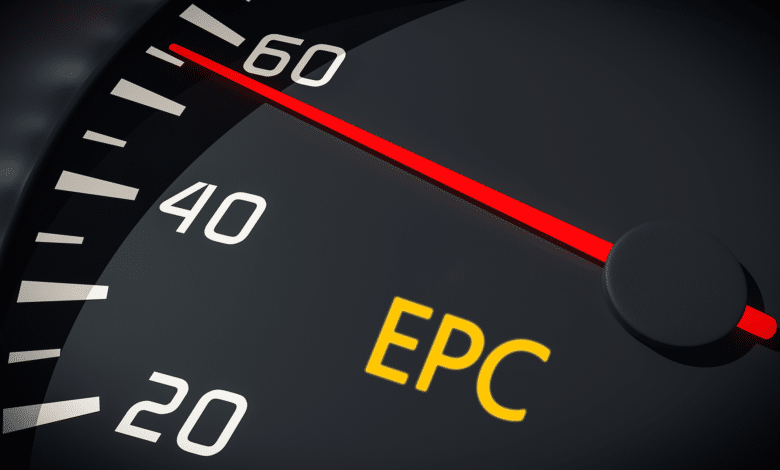
As a car owner, or at least a driver, you’ve probably encountered the “EPC” symbol on your dashboard at least once. The EPC light is usually one of those warning lights that we ignore until it actually comes on. But why does the EPC light come on in my car and what does it mean for my vehicle? And what happens if the EPC lights up and you actually ignore it?
The EPC light, or rather the system behind it, is an essential part of your car that helps you monitor the performance and safety of your vehicle. When the EPC light is on, it’s usually a sign that something is wrong with your car’s electronic system. However, the reasons can be many and varied, ranging from a failed brake light to a readout error in the electronic accelerator pedal. So you won’t be spared a more detailed diagnosis.
EPC Meaning – What does EPC mean in a car and what does it do?
EPC stands for “Electronic Power Control” and is a warning system that has been installed in many modern cars since the turn of the millennium. It monitors your vehicle’s electronic control system, which controls a variety of functions, including engine performance, the braking system, and other important vehicle components. If the EPC light comes on or an EPC warning appears in your onboard computer, it means the system has detected a fault. However, this is all that can be determined at this point.
The EPC light is usually connected to a system as well as the ECU, which collects data from various sensors throughout the vehicle. These sensors monitor everything from engine speed and ignition to brake pressure and accelerator pedal position. If any of these systems aren’t working properly, it can cause EPC to light up on your dashboard.
EPC also plays another critical role in your vehicle. The system makes sure your engine is running efficiently (including emissions) and properly. When the EPC light comes on, it may also be a sign that your car isn’t operating at optimal performance levels and that a problem has crept in somewhere that requires your attention (or that of your mechanic). You shouldn’t put an EPC problem on the back burner to avoid major damage to your car.
Why is the EPC light on in my car?
The EPC light in your car can come on for a number of reasons. In most cases, the warning appears when the ECU detects a fault in one of the many electronic systems it monitors. This can indicate a variety of problems, from minor defects to major issues such as a brake circuit failure. Usually, though, it’s the little things that lead to faults first. For example, a faulty or dirty sensor can provide incorrect data to the system, which can cause the EPC light to come on and your engine to stop running properly.
However, the specific reasons why the EPC light comes on can vary by car make and model. EPC lights – VW, Audi and many other manufacturers already show additional details about the error in the multifunction display or on the on-board computer. The EPC light can also light up, for example, in cases where there is a problem with the ABS system or the electronic accelerator pedal can not read the position correctly.
EPC lights up and car jerks – these problems usually go hand in hand
A common symptom that many drivers notice when the EPC light comes on is that the car begins to jerk. This can be a disconcerting experience, especially if you’re driving on a busy road or highway. But what exactly does it mean when the EPC light comes on and the car jerks?
The car juddering is usually a sign that the engine is not running properly. This can be due to a variety of issues, including a faulty ignition coil, a problem with the fuel system, or a faulty sensor. When the EPC light comes on and the car bucks, it usually indicates that one of the control units has detected an irregularity and may already be responding appropriately to keep the engine running.
Normally, when the EPC light comes on, the car switches to what is called “emergency running mode” or “emergency operation.” This is a protective function designed to prevent further damage to the vehicle by reducing engine power and limiting maximum speed. In this mode, you can usually still drive to the nearest garage or at least to a safe location. However, it is important to note that the emergency running mode is not meant to move the car over longer distances or for a longer period of time. In short, driving to the nearest workshop is okay, but by no means taking it on vacation.
Fault sources and possible solutions for an EPC warning
There are a number of common sources of error that can cause the EPC light to come on in your car. Here are some of the most common problems and how you can fix them:
- Many of the systems in your car that can affect the EPC light depend on sensors to function properly. If one of these sensors is faulty or providing incorrect data, it can cause the EPC light to activate. In this case, the defective sensor must be identified and replaced.
- The accelerator pedal in your car is connected to sensors that tell the engine or ECU how much fuel it should burn. If there is a problem with the accelerator pedal or the sensors connected to it, that can also cause the EPC light to come on. A thorough inspection and, if necessary, replacement of the accelerator pedal or sensors may be able to correct this problem.
- Your car’s braking system is another player monitored by the EPC light or the system behind it. Problems with the brakes or the sensors (ABS, ESP, brake lights) can cause the EPC light to come on. In this case, you should have your brake system checked by a professional as soon as possible and, before you continue driving, test the brakes for function.
- The engine control unit is the brain of your vehicle and controls a variety of systems. If there is a problem with the engine control unit, it may cause the EPC light to come on as well. In this case, you should go directly to a workshop and have a diagnosis performed. With a bit of bad luck, namely one of the control units is no longer working as it should.
EPC repair: costs that can come to you
The cost of repair when EPC lights up can vary widely, depending on the exact cause of the problem. Some problems, like a faulty sensor, can be relatively inexpensive to fix, while others, like a faulty engine control unit, can be significantly more expensive – but at the same time, occur much less frequently.
In general, the cost of repairing the EPC light or the fault behind it can range from 100 to 600 euros. This includes the cost of diagnosing the problem via software, the parts needed and the labor time for the repair. In some cases, however, the cost can be higher, especially if the problem is of a more serious nature or if it involves a more expensive vehicle.
However, it’s always a good idea to get several estimates before you decide to have your car repaired to make sure you’re getting a fair price. In addition, you should know that ignoring the EPC light and not fixing the issue will often result in higher repair costs than having the problem promptly assessed. Problems that seem small at first can worsen and lead to serious damage to the vehicle if not fixed in a timely manner. So there’s no harm in going straight to the workshop you trust and getting to the bottom of the problem.
EPC and check engine light – Two warning lights with different indication
The EPC light and the check engine light are two different warning lights on your car’s dashboard, both of which provide important information about your vehicle’s condition. Although they indicate different sources of trouble, they can sometimes light up at the same time, which can indicate a serious problem.
| EPC light | Engine control light |
| The EPC light monitors your car’s electronic control system, which controls a variety of functions, including engine performance, the braking system, and other important vehicle components. When the EPC light is on, it means the system has detected a fault. | The check engine light is a more general indicator that comes on when your car’s on-board diagnostic system has detected a problem in the engine control or exhaust system. This can indicate a variety of problems, from a loose fuel cap to a faulty catalytic converter. |
If both the EPC light and the check engine light come on at the same time, it’s usually a sign that there really is a serious problem that requires your immediate attention. In this case, you should have your car checked by a professional as soon as possible to diagnose and fix the problem – should it even be possible to continue driving.
EPC lights: Self-diagnosis and the use of analysis tools
It is now possible for less-savvy auto mechanics to self-diagnose some of the faults that cause the EPC light to illuminate. However, this requires a certain level of technical knowledge and the right tools. One of the most effective ways to diagnose vehicle faults is to use an OBD2 scanner or similar diagnostic device.
OBD stands for “on-board diagnostics” and is a standard implemented in almost all modern cars. It monitors the performance of various vehicle systems and detects problems, often before the driver even realizes something is wrong. An OBD2 scanner can be connected to your car’s OBD system and gives you access to the fault codes that the system has stored. You can either choose a wireless Bluetooth adapter that you pair directly with a corresponding error reading app on your smartphone. Or you can dig a little deeper and order an OBD scanner with cable and all the other functions.
The fault codes read with it can provide you with a lot of information about your vehicle’s problems. As soon as a connection is established, you’ll get a list of all the errors in the system and, depending on the manufacturer or provider, even repair instructions or tips on how to fix them. The market offers many different OBD2 scanners, from simple devices that only read error codes to more advanced devices that provide real-time data and can even perform some repairs.




No replies yet
Neue Antworten laden...
Gehört zum Inventar
Beteilige dich an der Diskussion in der Basic Tutorials Community →